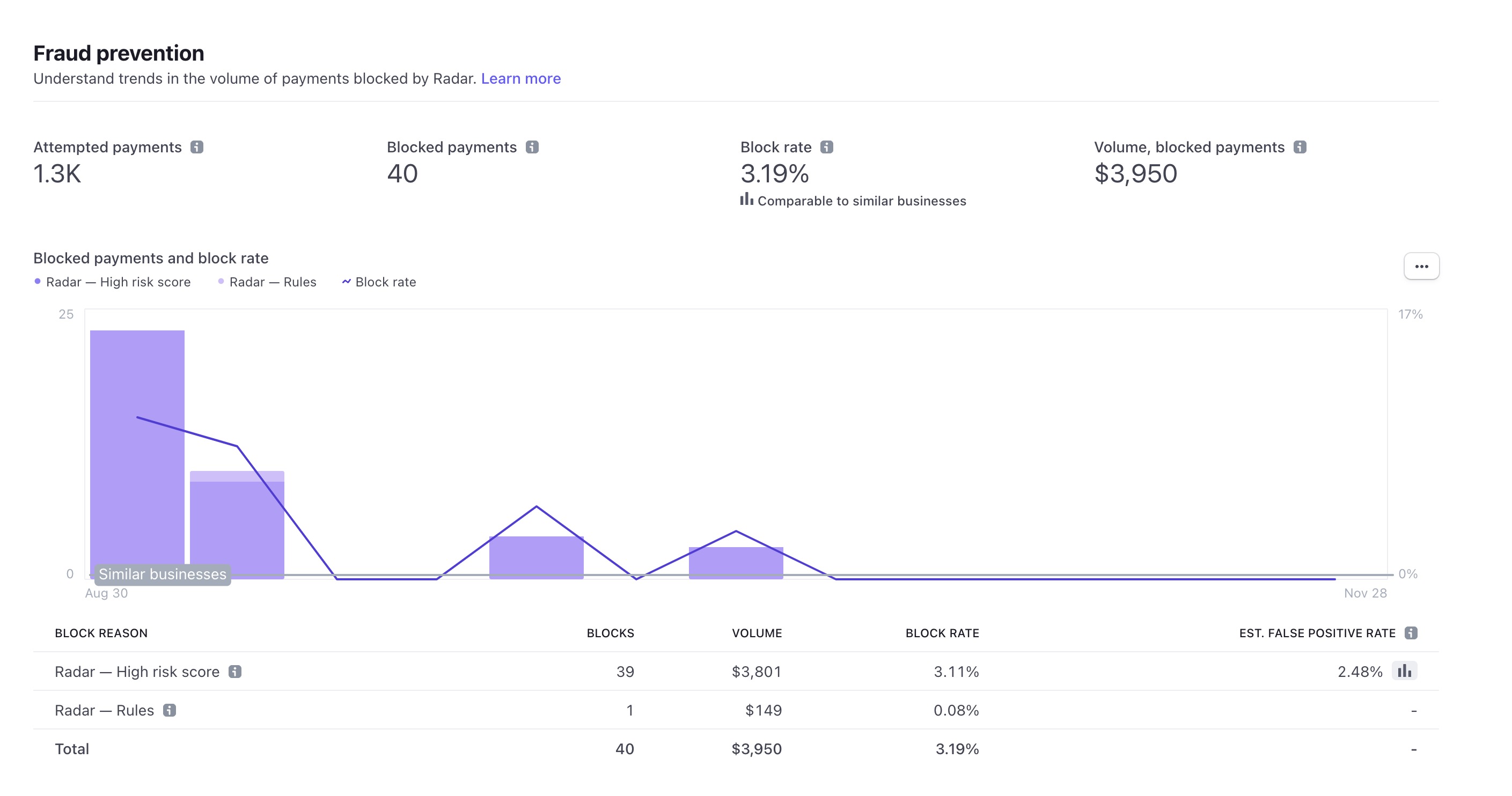Stripe Radar: Machine Learning vs. Radar for Fraud Teams – What's the Difference?
Stripe Radar and Radar for Fraud Teams are two fraud prevention tools with difference pricing and fees. We'll compare them and help you decide which one is right for you.
Posted by
Related reading
Understanding Stripe Fees: A Comprehensive Guide
Stripe fees can be confusing. We'll break down the different fees and how to calculate them. We'll also cover how to reduce your Stripe fees.
5 Effective Ways to Reduce Chargebacks on Stripe
Each chargeback can trigger significant fees and potentially lead to Stripe account closure. Let's take a look at how to protect your business from chargebacks.

Stripe Radar's Machine Learning
Stripe Radar's machine learning is a powerful, automated component of Stripe's fraud detection suite. It's built into the Stripe payment platform and uses advanced algorithms to analyze transaction patterns. It's designed to detect suspicious activities without any manual input, thus streamlining the fraud-prevention process.
- Dynamic Fraud Detection: Machine learning models are constantly updated with data from the millions of businesses using Stripe, which helps to identify fraudulent patterns with high precision.
- Automatic Updates: The system continually adapts to new fraud trends, ensuring your business is protected against the latest threats with no additional effort on your part.
- Scalability: Machine learning scales with your business, providing automated fraud detection whether you're processing dozens or millions of transactions.
Radar for Fraud Teams
On the other hand, Radar for Fraud Teams offers additional tools on top of Stripe Radar's foundational machine learning protections. It's tailored for businesses that require a more hands-on approach to managing fraud, providing enhanced features to fraud specialists or teams dedicated to this task.
- Custom Rules: Users can set specific fraud detection rules based on their unique business insights and risk tolerance.
- Review Interface: A specialized dashboard allows fraud teams to review and act on flagged transactions easily.
- Rich Insights: Additional data points and machine learning insights are provided to help inform decision-making.
Stripe Radar Fee Comparison
Now, let's talk about the "Stripe Radar fee", which is a critical aspect for any business considering these services. Below we compare the fees for the two services.
| Stripe Service | Fee Structure | Features Included |
|---|---|---|
| Stripe Radar's Machine Learning | Integrated with Stripe payments at no additional cost | Automated fraud detection, Machine learning, Basic rule sets |
| Radar for Fraud Teams | $0.02 USD per screened transaction | All features of machine learning, Custom rule sets, Review interface, Advanced insights |
| Chargeback Protection (add-on) | 0.4% per transaction | No dispute fee, no evidence submission required |
Please note that the pricing is subject to change, and it's always best to check the latest Stripe Radar pricing for the most accurate information.
Key Takeaways
To decide between Stripe Radar's machine learning and Radar for Fraud Teams, consider the following:
- Smaller businesses or those with less complex transactions may find the automated machine learning service sufficient.
- Businesses with more significant transaction volumes or with specific fraud concerns may benefit from the additional options and control provided by Radar for Fraud Teams.
- While there is a cost associated with Radar for Fraud Teams, the service can potentially save money by reducing chargebacks and improving fraud detection accuracy.
Conclusion
The choice between using Stripe Radar’s machine learning capabilities and investing in Radar for Fraud Teams comes down to the specific needs of your business.
Both offer compelling features to fight fraud, but the latter provides additional customization and control that might be necessary for some businesses.
If you're looking for a way to reduce chargebacks, consider adding ByeDispute to your fraud prevention arsenal. It's a powerful tool that automatically detects duplicate payments, verifies customer emails, and checks for stolen credit cards.